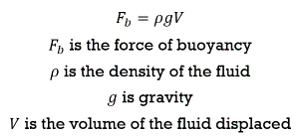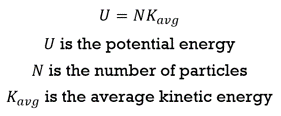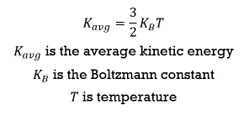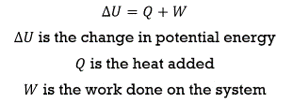Studio Ghibli Physics: Ponyo Physics

| Home |
Miyazaki |
Ponyo
Physics |
The
Importance of F = ma |
Sources |
The Pop-Pop Boat
In the film Ponyo, there is a scene where Ponyo uses magic to make a toy pop-pop boat become life sized. This part of the website will explain what pop-pop boats are and how they work.
.gif Credit: Ponyo (2008)
Pop-pop boats are made up of five parts. In Diagram A, all parts can be seen: a body (d), an engine (a), two tubes (c), a candle and a candle holder (b). Diagram B shows the engine from a bird's eye view. Water travels in one tube, into the engine, and out the other tube. As the engine expands and contracts, the metal makes a pop sound which is how this type of boat was named. The explanation for why the engine expands and contracts is discussed toward the bottom of this page.
Photo Credit: physics.stackexchange.com/
Buoyancy
Boats float because of buoyancy. Buoyancy is defined as the upward force exerted by fluid on an object. The force of buoyancy is equal to the mass of the fluid displaced by the object.
The force of buoyancy can be written as:
We know that the force of gravity can be written as:
- When the force of gravity is greater than the force of buoyancy, the object sinks.
- When the forces are equal in magnitude but opposite in direction, acceleration in the y direction is zero and the object floats.
Heat Engine
The pop-pop boat engine is a heat engine. The cycle of a heat engine can be broken down into four stages and explained through the laws of thermodynamics and heat transfer, and a pressure-volume diagram.
By combining these two thermodynamics equations,
we get this equation:
Using the Ideal Gas Law, we can rearrange our equations to get:
The first law of thermodynamics states:
We can determine whether the change in potential energy, the heat added, and the work done on the system, are positive or negative using the first law of thermodynamics and the pressure-volume diagram.
Since potential energy is proportional to temperature, we can use temperature on the pressure-volume diagram, to show if potential energy is positive or negative.
The diagram below is a generalized pressure-volume diagram of a heat engine:
Process A: The candle's flame is made up of rapidly moving particles. These particles hit the engine and heat it by radiation heat transfer. By looking at the pressure-volume diagram, we can see temperature is increasing (positive). Work done on the system is found by measuring the area under the curve. For Process A, an isochoric process, work is zero. Using the first law of thermodynamics, we can conclude that Q (heat added) is positive.
Process B: The water inside the engine is heated. As the water heats, the molecules move rapidly which results in the expansion of the engine. In this isobaric process, volume increases meaning work is negative. Temperature is again positive. From here we can conclude that Q is positive.
Process C: Cool water enters the engine because of the expansion. The temperature and pressure fall as a result. Process C is also an isochoric process meaning work is zero again. With the change in potential being negative, and the work being zero, we can conclude that Q is negative. This system is losing heat.
Process D: The engine contracts because of the incoming cold water, pushing out the hot water. In this isobaric process, the volume and temperature decrease. Because volume decreases, work is positive, and because temperature decreases, the change in potential energy is negative. We can conclude that Q is negative. From here, the cycle begins again.
Heat Engine Cycle
Overall, the change in potential energy for the entire engine cycle is zero because the pressure and volume are the same at the start and finish of the process.
Newton's Third Law
The boat moves because of Newton's Third Law. This law states "For every action, there is an equal and opposite reaction". The water being pushed out of the engine is counteracted by the outside water pushing back. This thrust, called Machian Propulsion, is what causes the boat to move forward.
Congratulations! You made it through the wall of text. Let's see the boat in action.










